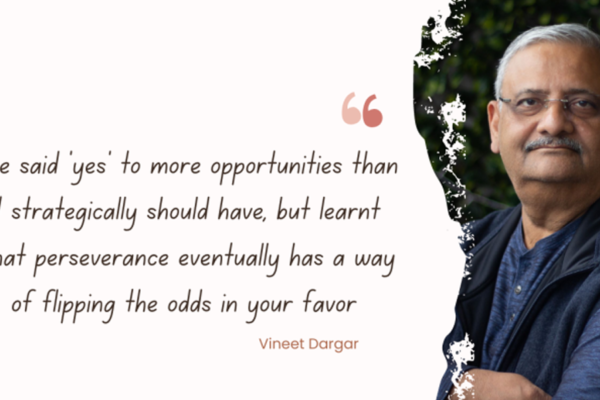In the ever-evolving landscape of the culinary industry, chefs and restaurants are no longer solely focused on creating exceptional dining experiences. They are venturing beyond traditional boundaries to expand their reach and tap into new revenue streams. This strategic move involves diversifying their offerings by introducing branded products such as spices, tableware, and barware. By doing so, these culinary powerhouses are not only enhancing the end-to-end customer experience but also capitalizing on untapped market potentials.
Gone are the days when a renowned chef or a successful restaurant could rely exclusively on their exquisite dishes and impeccable service to secure long-term success. In today’s fast-paced, digitized world where customer expectations are continually rising, the boundaries between the dining experience, products, and environments are becoming blurred. Chefs and restaurants are embracing this convergence to create a seamless and holistic customer journey. They are leveraging their brand reputation and expertise to develop high-quality, curated products that extend their influence beyond the dining table.
Expanding the Customer Experience
Let us first explore the concept of “end-to-end customer experience” and how chefs and restaurants can leverage it to their advantage. The term refers to the integration of products, services, and environments to create a cohesive and immersive customer journey. By expanding into products such as spices, tableware, and barware, chefs and restaurants enrich their customers’ lives beyond the dining experience itself.
For example, renowned Chef Irani from Chai Pani has successfully expanded his culinary empire to include a line of signature spices. Each spice blend is carefully crafted, drawing inspiration from his world travels and culinary expertise. When customers purchase these spices, they not only enhance their home-cooked meals but also get a taste of the unique flavors and techniques associated with Chef’s renowned dishes. This seamless integration of products into the brand experience elevates the overall customer satisfaction and loyalty.
Seizing New Opportunities
The decision to expand into product lines is not merely driven by the desire to diversify revenue streams but also by the need to stay competitive in an ever-changing landscape. As the digital transformation disrupts the culinary industry, chefs and restaurants face heightened challenges from unexpected competitors. The integration of products and services allows them to innovate and differentiate themselves, staying one step ahead in the market.
According to recent studies, the global market for culinary products is expected to reach $451.6 billion by 2028, presenting tremendous opportunities for chefs and restaurants to capitalize on this growing trend. By tapping into this market, culinary businesses can unlock new revenue streams and secure a competitive advantage. For instance, Chef Ramon has successfully expanded his brand by introducing a line of sleek and minimalist tableware. This strategic move not only enhances the dining experience at his establishment but also allows customers to recreate a fine-dining ambiance in their own homes.
Designing Integrated Experiences
The success of chefs and restaurants in expanding into products lies in their ability to design seamless, integrated experiences for their customers. It is no longer sufficient for culinary businesses to focus solely on creating exceptional dishes and impeccable service. The key lies in striking the right balance and creating a compelling blend of products, services, and environments.
To illustrate this, let us consider the case of Chef Lucia, who owns a highly acclaimed restaurant specializing in craft cocktails. Recognizing the tremendous opportunity in the barware market, Chef Lucia partnered with an award-winning industrial designer to create a line of sleek and sophisticated barware accessories. These meticulously designed tools not only enhance the cocktail-making process but also elevate the overall bar experience for both professional mixologists and home enthusiasts. By seamlessly integrating these products into her establishment, Chef Lucia has created a cohesive and immersive customer journey that goes beyond the mere act of sipping a cocktail.
Statistics and Insights
To further underline the significance of this emerging trend, let us delve into some statistics that shed light on the expanding role of chefs and restaurants in the product market:
- According to a recent report by Quantum Research, the global market for culinary products is projected to grow at a CAGR of 6.7% from 2021 to 2026.
- The National Restaurant Association found that 75% of consumers are more likely to purchase products associated with their favorite restaurants or chefs.
- A study by CRI Consulting revealed that customers who purchase branded culinary products are 30% more likely to recommend the associated restaurant to their friends and family.
- The Specialty Food Association reported a 42% increase in sales of culinary products from chef-owned restaurants in the past year.
In conclusion, the expanding role of chefs and restaurants into product lines such as spices, tableware, and barware presents a unique opportunity for both enhancing the end-to-end customer experience and capitalizing on new revenue streams. By seamlessly integrating these products into their brand experience, culinary businesses can create a cohesive and immersive journey for customers, extending their influence beyond the dining table. With the market for culinary products expected to grow exponentially, now is the time for CEOs in the culinary industry to seize these opportunities and design integrated experiences that will drive customer loyalty and sustainable business growth.








